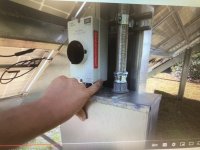solarken
NABCEP PVIP
- Location
- Hudson, OH, USA
- Occupation
- Solar Design and Installation Professional
With SqD discontinuing the HU361RB safety switch, what are you using for ground mount PV disconnects mounted outside at the array to avoid rapid shutdown requirements when the inverter is in the home? I know there is a windowed version VHU from SqD but it costs is too high. The Siemens HNF361 is only rated for 250vdc. Thanks in advance for any suggestions.


